-
 Bitcoin
Bitcoin $113900
-1.39% -
 Ethereum
Ethereum $3517
-4.15% -
 XRP
XRP $3.009
1.59% -
 Tether USDt
Tether USDt $0.9997
-0.04% -
 BNB
BNB $766.8
-1.41% -
 Solana
Solana $164.6
-2.38% -
 USDC
USDC $0.9998
-0.02% -
 TRON
TRON $0.3277
0.65% -
 Dogecoin
Dogecoin $0.2023
-1.67% -
 Cardano
Cardano $0.7246
0.05% -
 Hyperliquid
Hyperliquid $38.27
-4.77% -
 Sui
Sui $3.528
-0.52% -
 Stellar
Stellar $0.3890
-0.73% -
 Chainlink
Chainlink $16.16
-2.69% -
 Bitcoin Cash
Bitcoin Cash $539.9
-4.38% -
 Hedera
Hedera $0.2425
-2.00% -
 Avalanche
Avalanche $21.71
-0.97% -
 Toncoin
Toncoin $3.662
5.73% -
 Ethena USDe
Ethena USDe $1.000
-0.02% -
 UNUS SED LEO
UNUS SED LEO $8.964
0.35% -
 Litecoin
Litecoin $107.7
2.33% -
 Shiba Inu
Shiba Inu $0.00001223
-0.40% -
 Polkadot
Polkadot $3.617
-0.97% -
 Uniswap
Uniswap $9.052
-2.49% -
 Monero
Monero $295.1
-3.79% -
 Dai
Dai $0.9999
0.00% -
 Bitget Token
Bitget Token $4.315
-1.85% -
 Pepe
Pepe $0.00001060
0.11% -
 Cronos
Cronos $0.1342
-2.72% -
 Aave
Aave $256.0
-0.87%
How to connect Trust Wallet to bank account?
Trust Wallet doesn’t link directly to bank accounts, but you can transfer crypto to exchanges like Binance or Coinbase and withdraw fiat to your bank after selling.
Aug 02, 2025 at 01:21 pm
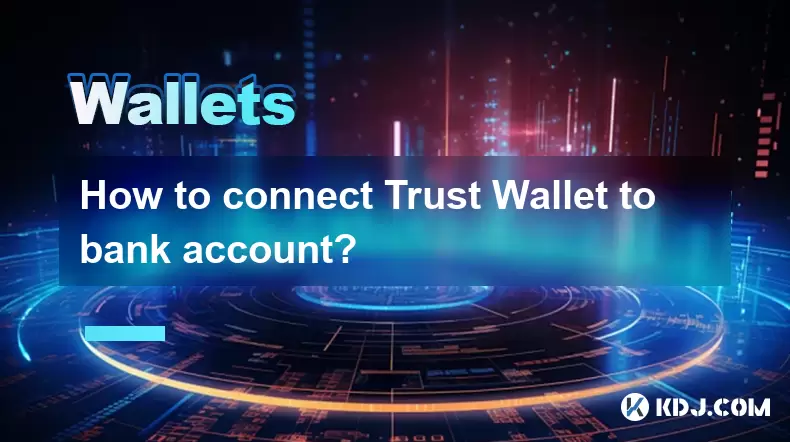
Understanding Trust Wallet and Bank Account Integration
Trust Wallet is a decentralized cryptocurrency wallet that allows users to store, send, receive, and interact with various blockchain assets. It does not directly support integration with traditional bank accounts because it operates on blockchain networks, which are separate from centralized banking systems. However, users can bridge the gap between Trust Wallet and their bank accounts through third-party financial service providers such as cryptocurrency exchanges or peer-to-peer (P2P) platforms. These intermediaries enable the conversion of crypto assets into fiat currency, which can then be transferred to a bank account.
Using Centralized Exchanges to Link Trust Wallet and Bank
To connect Trust Wallet to a bank account, one of the most common methods is to use a centralized exchange that supports both cryptocurrency deposits and bank withdrawals. Platforms like Binance, Coinbase, Kraken, and Crypto.com allow users to withdraw fiat currency to a linked bank account after selling their crypto. The process begins by transferring cryptocurrency from Trust Wallet to the exchange. This involves copying the deposit address from the exchange for the specific cryptocurrency (e.g., BTC, ETH, or USDT). Once the crypto is deposited, it can be sold for fiat on the exchange. After the sale, users initiate a withdrawal in fiat currency, which is sent directly to their verified bank account.
- Log in to your preferred centralized exchange and navigate to the "Fiat and Spot Wallet" section
- Select the cryptocurrency you wish to deposit and copy the provided deposit address
- Open Trust Wallet, select the corresponding cryptocurrency, and tap "Send"
- Paste the exchange’s deposit address and confirm the transaction with your wallet password or biometric authentication
- Wait for blockchain confirmation, which may take a few minutes to several hours depending on network congestion
- Once confirmed, go to the exchange’s trading section, sell your crypto for fiat (e.g., USD, EUR)
- Proceed to the "Withdraw" section, choose your linked bank account, and submit the withdrawal request
Setting Up Bank Account on Cryptocurrency Exchanges
Before initiating any fiat withdrawal, users must verify their identity and link a bank account on the exchange. This process, known as Know Your Customer (KYC), requires submitting government-issued identification, proof of address, and sometimes a selfie. Once verified, users can add a bank account via several methods:
- Use automated clearing house (ACH) linking by entering bank login credentials through a secure third-party service like Plaid
- Manually input bank account and routing numbers and verify through small test deposits
- Link a debit card associated with the bank account, though this method may have lower withdrawal limits
Each exchange has its own verification timeline, ranging from instant to several business days. Ensuring accurate information during setup prevents delays in fund transfers.
Using Peer-to-Peer (P2P) Platforms for Direct Bank Transfers
Another way to connect Trust Wallet to a bank account is through P2P trading platforms such as Binance P2P, LocalBitcoins, or Paxful. These platforms allow users to sell cryptocurrency directly to buyers who pay via bank transfer. After setting up a sell order, a buyer sends money to your bank account, and upon confirmation, you release the crypto from escrow.
- Open the P2P platform and create a sell advertisement specifying the cryptocurrency, amount, and preferred payment method (e.g., bank transfer)
- Choose a buyer whose payment method matches your bank details and accept their purchase request
- Wait for the buyer to complete the bank transfer and mark it as paid on the platform
- Verify the payment in your bank account—do not release crypto until funds are confirmed
- Once confirmed, log back into the P2P platform and release the cryptocurrency from escrow
This method avoids exchange fees but requires caution to avoid scams. Always use platforms with escrow protection and trade only with users who have high ratings and a history of successful transactions.
Alternative Methods: Crypto Debit Cards and Fiat Gateways
Some services offer crypto debit cards that are linked to Trust Wallet or compatible wallets, allowing users to spend cryptocurrency directly while funds are automatically converted to fiat. Cards like Crypto.com Visa Card or Binance Card can be funded by transferring crypto from Trust Wallet to the card’s internal wallet. When used at merchants or ATMs, the transaction is settled in local currency, and the equivalent amount is deducted from your crypto balance. While this doesn’t directly deposit money into a bank account, it provides indirect access to fiat through spending.
Additionally, certain fiat gateways such as MoonPay or Ramp Network integrate with Trust Wallet to allow users to sell crypto for fiat and withdraw to a bank account. These services appear within the Trust Wallet app under the "Buy Crypto" or "Convert" section. Users select the "Sell" option, choose the cryptocurrency, enter the amount, and provide bank details. After completing identity verification, the fiat amount is transferred to the specified bank account within a few business days.
Security and Best Practices
When connecting Trust Wallet to a bank account via intermediaries, security is paramount. Never share your Trust Wallet recovery phrase with anyone or enter it on any website. Only use official apps and verified exchange websites. Enable two-factor authentication (2FA) on all associated accounts. Double-check wallet addresses before sending crypto, as blockchain transactions are irreversible. Monitor transaction fees on both the blockchain and the exchange, as high fees can reduce the net amount received in your bank account.
Frequently Asked Questions
Can I link my bank account directly inside the Trust Wallet app?
No, Trust Wallet does not support direct bank account linking. It is a non-custodial wallet focused on blockchain assets. To access fiat, you must use third-party services like exchanges or P2P platforms.
What are the fees involved when moving funds from Trust Wallet to a bank account?
Fees vary by method. Blockchain network fees apply when sending crypto from Trust Wallet. Exchanges may charge deposit, trading, and withdrawal fees. Bank withdrawals often have fixed or percentage-based fees. P2P trades may have no fees but depend on the platform’s policies.
How long does it take to receive money in my bank account from Trust Wallet?
The total time depends on multiple steps. Crypto transfers take minutes to hours. Exchange processing may add 1–24 hours. Fiat withdrawals via ACH or SEPA typically take 1–5 business days. P2P transfers depend on the buyer’s bank processing speed.
Is it safe to use third-party services to connect Trust Wallet with my bank?
Yes, if you use reputable and verified platforms with strong security measures like 2FA, escrow protection, and KYC verification. Avoid phishing sites and always verify URLs before logging in.
Disclaimer:info@kdj.com
The information provided is not trading advice. kdj.com does not assume any responsibility for any investments made based on the information provided in this article. Cryptocurrencies are highly volatile and it is highly recommended that you invest with caution after thorough research!
If you believe that the content used on this website infringes your copyright, please contact us immediately (info@kdj.com) and we will delete it promptly.
- Worldcoin, Identity, WLD Price: Decoding the NYC Crypto Buzz
- 2025-08-02 21:10:12
- Shiba Inu: Utility and Community Strength Drive Crypto's Evolution
- 2025-08-02 21:50:12
- Crypto Donations, Trump PAC, and Bitcoin: A New York Minute on Political Coin
- 2025-08-02 20:30:12
- Crypto Market Under Pressure: Bearish Momentum and Rising Volatility Take Hold
- 2025-08-02 20:30:12
- Crypto Market Carnage: Liquidations Soar as Ethereum and Bitcoin Take a Beating
- 2025-08-02 21:55:12
- DeFi Token Summer Gains: Is Mutuum Finance the Real Deal?
- 2025-08-02 18:30:12
Related knowledge

What is a watch-only wallet in Trust Wallet?
Aug 02,2025 at 03:36am
Understanding the Concept of a Watch-Only WalletA watch-only wallet in Trust Wallet allows users to monitor a cryptocurrency address without having ac...

How to switch between networks in Trust Wallet?
Aug 02,2025 at 12:36pm
Understanding Network Switching in Trust WalletSwitching between networks in Trust Wallet allows users to manage assets across different blockchains s...
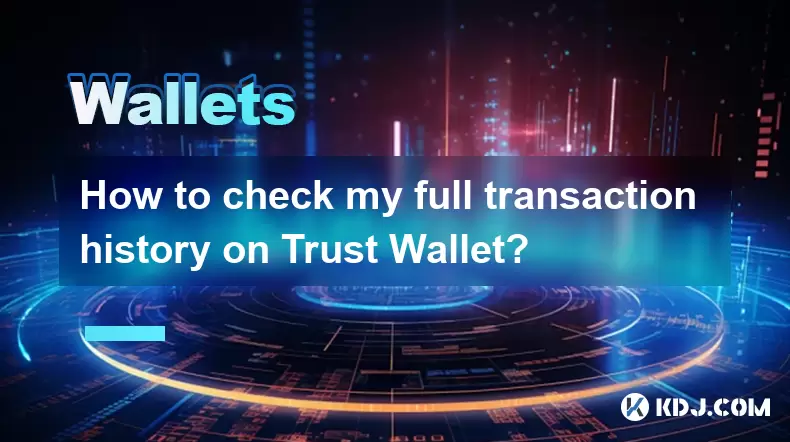
How to check my full transaction history on Trust Wallet?
Aug 02,2025 at 09:24am
Understanding Transaction History in Trust WalletTrust Wallet is a widely used non-custodial cryptocurrency wallet that supports a broad range of bloc...
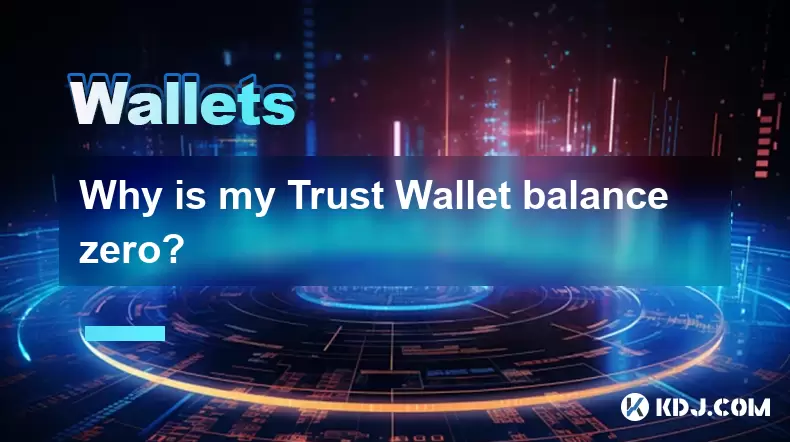
Why is my Trust Wallet balance zero?
Aug 02,2025 at 03:49am
Understanding Trust Wallet Balance Display IssuesIf you're seeing a zero balance in your Trust Wallet despite knowing you've previously received or se...
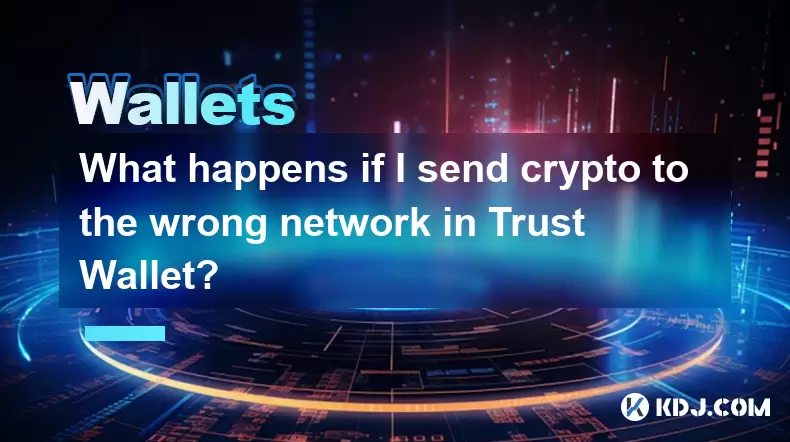
What happens if I send crypto to the wrong network in Trust Wallet?
Aug 02,2025 at 07:22pm
Understanding Network Compatibility in Trust WalletWhen using Trust Wallet, it's essential to understand that different cryptocurrencies operate on di...
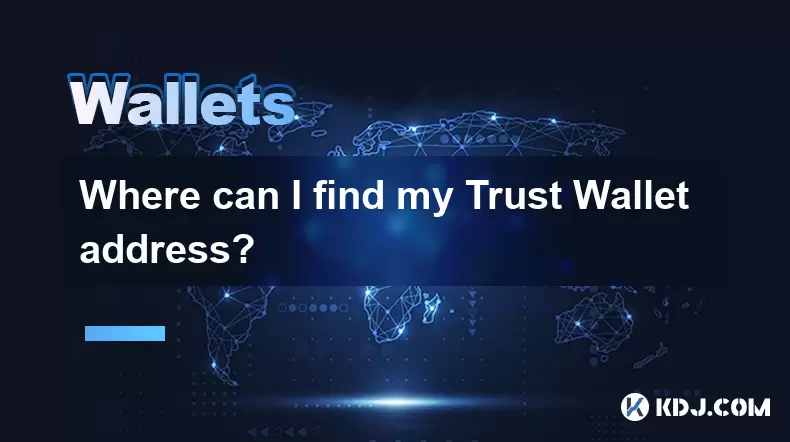
Where can I find my Trust Wallet address?
Aug 02,2025 at 06:07pm
Understanding Your Trust Wallet AddressYour Trust Wallet address is a unique identifier that allows others to send you cryptocurrency. It is a string ...

What is a watch-only wallet in Trust Wallet?
Aug 02,2025 at 03:36am
Understanding the Concept of a Watch-Only WalletA watch-only wallet in Trust Wallet allows users to monitor a cryptocurrency address without having ac...

How to switch between networks in Trust Wallet?
Aug 02,2025 at 12:36pm
Understanding Network Switching in Trust WalletSwitching between networks in Trust Wallet allows users to manage assets across different blockchains s...

How to check my full transaction history on Trust Wallet?
Aug 02,2025 at 09:24am
Understanding Transaction History in Trust WalletTrust Wallet is a widely used non-custodial cryptocurrency wallet that supports a broad range of bloc...

Why is my Trust Wallet balance zero?
Aug 02,2025 at 03:49am
Understanding Trust Wallet Balance Display IssuesIf you're seeing a zero balance in your Trust Wallet despite knowing you've previously received or se...

What happens if I send crypto to the wrong network in Trust Wallet?
Aug 02,2025 at 07:22pm
Understanding Network Compatibility in Trust WalletWhen using Trust Wallet, it's essential to understand that different cryptocurrencies operate on di...

Where can I find my Trust Wallet address?
Aug 02,2025 at 06:07pm
Understanding Your Trust Wallet AddressYour Trust Wallet address is a unique identifier that allows others to send you cryptocurrency. It is a string ...
See all articles

























































































